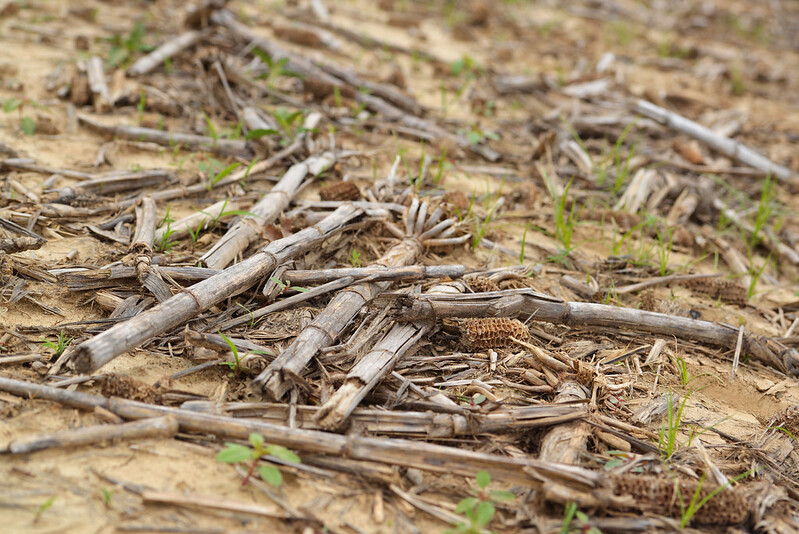
Planting a cover crop after corn harvest this fall prior to soybeans can provide benefits such as nitrogen sequestration, reduced soil erosion and enhanced water quality. (Photo: Iowa Soybean Association)
Consider a cover crop ahead of 2023 soybeans
September 15, 2022 | Kriss Nelson
Now is the time to make your fall cover crop purchase and seeding decisions.
Scott Nelson, Iowa Soybean Association (ISA) senior field services program manager, has provided the top three reasons to consider a cover crop ahead of your 2023 soybeans.
1. Recapture leftover nitrogen from your 2022 corn crop
“Due to widespread drought this summer, there is likely leftover nitrogen in your soil,” says Nelson. “Cover crops such as cereal rye do an excellent job preventing this nitrogen loss to crop production by sequestering nitrogen in the biomass. This nitrogen in the cover crop residue will become available to the 2023 soybean crop later in the growing season, which could add to yield potential.”
2. Weed management
Weed control can be an issue in soybeans, and cover crops can help to simplify weed management.
“Cover crops have shown to provide significant benefit in suppressing weeds, especially when planted green,” says Nelson. “Cover crops also keep weed size smaller, allowing for the convenience for timely postemergence applications or herbicides.”
3. Protecting the soil
“Cover crops help to prevent soil erosion and improve soil health,” says Nelson. “Even if you do not use cover crops ahead of corn, bi-yearly use of cover crops will still provide erosion control and soil health benefits.”
Cover crop availability
Bill Frederick, co-owner of Iowa Cover Crop, a full-service cover crop business located near Jefferson in Greene County, says that with a decent harvest of cereal rye in the north and western parts of the U.S., cereal rye seed should be ample.
“I am not too worried about running out of cereal rye seed, but you should play it on the safe side and order early, so you know you have it locked in,” he says.
If cover crop seed supply does run low in your area, Nelson says to not give up, and try to contact a neighboring farmer that raised their seed for availability or adjust where necessary.
“Consider reducing the seeding rate of cereal rye or blending alternative cover crops with cereal rye,” he says.
Back